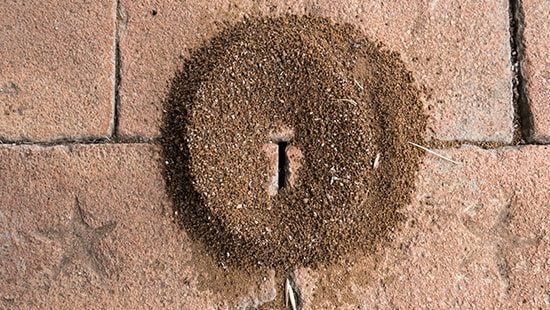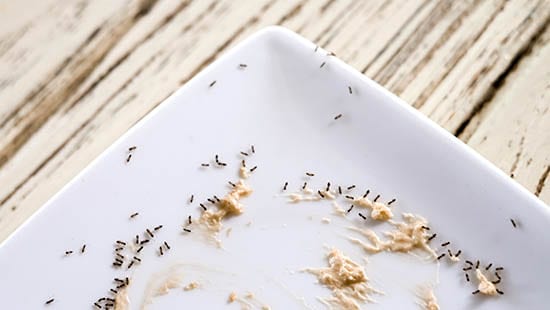How to Find Ant Nests

To deal with ants at your facility, it’s important to know how to locate an ant nest and understand what attracted the ants in the first place. Understanding these two things and following the correct steps for prevention will set your facility up for success and help protect your business.
What Attracts Ants
- Accumulated food materials on kitchen floors, under equipment and behind walls
- Food material in the bottom of trash bins, dumbwaiters, lift pits, etc.
- Spilled trash or accumulation of waste around exterior refuse holding areas including drinks dregs in empty bottles
- Sticky residues from spilled liquids, particularly sweets

Where Ants Build Nests
Ants nest in different areas depending on the habits of their species. Common nesting locations include inside wet or water-damaged wood (indoors or outdoors), inside foam insulation in wall voids, in sandy soil at the edges of foundations or under slab concrete, in trees, in flower beds, or out in the middle of a landscape.
When ants are found indoors, it does not necessarily indicate an indoor nest; ants with outdoor nests commonly wander indoors in search of food.
Properly identifying the ant species is an important step in determining where it may be nesting, and ultimately for achieving ant control.
How to Locate an Ant Nest
What nest entrances look like and how to find them
Worker ants are responsible for building the nest for the colony. You’ll often see them moving to, from, and around the nest, so watching their movement and following their trails is a good way to find the source of ants.
Ants that nest in the ground leave small piles of excavated soil just outside of nest entrances. These excavation piles often have a small “volcano” appearance. Look for these both indoors and outdoors as they are good indicators of an active nest.
Some ant species routinely nest indoors, in wall cavities or in damaged wood inside structures. Instead of excavated soil, evidence of an active indoor nest may include small piles of drywall or sawdust around or underneath nest entrances.
Even if you have found one ant nest, the search may not yet be over. Some species of ants produce “satellite nests” which are separate offshoots from the original nest. Locating and properly treating all active nests is critical to effective ant control.
More Pest Resources
Ants can cause serious problems for your business. Use this guide to identify common types of ants so you can confidently maintain a pest-free facility.
With more than 12,400 species of ants in the world, controlling ants seems complex. By understanding ant behavior, you can eliminate them.
With their potential to bite, sting and contaminate food, ants are more than just a nuisance. Ant elimination services help control a variety of ants.
To win the fight against rodents, teach employees how rodents can enter your facility, the signs of their presence and the damage they can cause.




